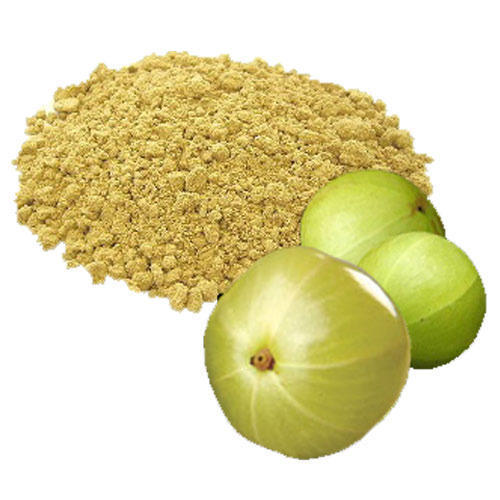The Healing Power Of Herbs For Pure Natural Remedies…
Want to take back control of your health…
Discovering modern uses of age-old remedies…
For example:
How to get maximum gains from your bodyweight training.
What if you’ve been struggling to put all the pieces together?
What if you’re stuck, not getting results you expected?
Do your supplements suck?
Do you feel it is time to pause and re-evaluate?
What could you do to get massive results?
Maybe you can benefit from medicinal plants?
I believe one of the greatest discoveries I’ve ever made in my life is without exaggeration…
The true healing power of medicinal herbs…
And it’s not impossible for fast results.
Yes, but that’s how most people think.
Would medicinal herbs work for you?
You’re wondering are herbs right for me?
Do herbs actually work?
Quick question: Do you ever feel frustrated?
Stuck in a rut, caught in a slump, stalled out…
Whatever you want to call it!
Wake up, kick-ass, repeat…
(and remember to smell the roses).
This is the reason why you’d be super thankful to access the newest inside scoop.
(…more details in just a moment).
Let’s answer the obvious question first…
Are there any risks in using medicinal herbs?
Specific herbs support different parts of body.
(You’ll see below herbs guide used in medicine).
What if you train daily (hard and consistent)?
How long does your body need to recover?
We’d love to avoid injury, exhaustion, fatigue!
Probably not going to happen right? 😉
Of course, I’ll share how it does work in food.
Yes, and it’s not the end of herb’s benefits.
In fact, the list of benefits is almost endless.
Just in case you haven’t asked already…
What’s the difference between virus and bacteria?
Virus is tiny, can’t survive without living host.
Virus attaches to cells, reprograms, reproduces.
Unlike bacteria, most viruses do cause disease.
Natural herbs are plant-derived raw materials.
These are not made in a lab using synthetics.
The side effects are much lower than using prescription drugs (between zero and 3%).
That’s why medicinal herbs are the best choice for people concerned about their own health.
Imagine a super-powered magic bullet list of herbs…
Herbs you could use to help boost your immune and health.
(All natural, proven by the science of nature).
Everyone wants to know the performance enhancing secret.
Instead of worrying and stressing out right?
We both know for thousands of years herbs are used for powerful medicinal properties, health and healing…
The most common use of herbs is for flavoring, garnishing of food and macronutrients.
Herbs are plants with savory, fragrant, aromatic properties.
What about herbs used for medicinal purposes?
We know, the type of foods (nutrition) you eat determines mental, emotional and energy levels in your life.
Yes, and it’s 100% ABSOLUTELY true…
The quality of diet is deeply connected to body, mind, spirit.
Keep reading to discover powerful medicinal herbs and how you can add to your diet…
Herbs promote natural healing for the body.
It’s all proven, backed by the science of nature.
Have people lost their connection to nature?
These days the trend is changing.
Most of us are not aware or have taken for granted and overlooked nature as the true (original) source of healing.
And medicinal herbs are all around us…
Herbs not only assist in flavoring food…
And filling the air with delightful fragrances and aromas…
Herbs have medicinal properties to help promote healing.
Many of the herbs/plants listed below are medicinal herbs.
The following information can help guide you through 37 natural medicinal herbs…
We’re going to make use of medicinal herbs.
Why?
What if you feel exhausted lately?
Maybe it feels deeper than just being tired.
Not even lack of sleep.
We are talking overwhelming fatigue.
Well, is it time to do something about it?
Herbs provide lots of health benefits…
Some herbs help fight fatigue.
Some herbs help enhance performance.
Some herbs combat sickness (ailments).
What about ONE herb doing it all.
(Like all at the same time)?
Let’s face it…
You could grow that herb in your own garden:
Bergamot (Bee Balm): Is antimicrobial and soothing, often used to treat colds and flu.
Bee balm also has a soothing effect on digestive tract, helps to treat indigestion, bloating and nausea.
Basil: Provides the health benefits of antioxidants and is a defense against low blood sugar.
Aloe Vera: Antibacterial, antifungal, antiviral, wound and burn healer.
Natural laxative, soothes stomach, helps skin ailments
Basil: Powerful antispasmodic, antiviral, anti-infectious, antibacterial, soothes stomach
Black Cohosh: Relieves menopausal hot flashes, relieves menstrual cramps, helps circulatory…
And cardiovascular disorders, lowers blood pressure, reduces cholesterol, useful for nervousness and stress.
Note: (Do not use during pregnancy).
Black Walnut: Good for eliminating parasites…
Good for fungal infections, warts, poison ivy, aids digestion
Cinnamon: Proven to repel 99.9% of viruses and bacteria.
They can not live in the presence of cinnamon.
So it makes a great antibacterial and antiviral weapon.
Antibiotics cannot kill viruses because bacteria and viruses use different mechanisms and adaptations to survive and replicate. The antibiotic has no “target” to attack in a virus.
Cayenne: Catalyst for other herbs, useful for arthritis and rheumatism…
Used (topically and internally).
Good for colds, flu viruses, sinus infection and sore throat.
Useful for headache and fever, aids organs (kidneys, heart, lungs, pancreas, spleen, stomach.
Increases thermogenesis for effective natural weight loss
Clove Bud: Improves immune system, also an antioxidant which doubles as antibacterial and antimicrobial fighter
Cypress: The therapeutic properties of cypress oil are astringent, antiseptic, antispasmodic, deodorant, diuretic, haemostatic, hepatic, styptic, sudorific, vasoconstrictor, respiratory tonic and sedative
Dandelion: Helpful for PMS, good for menopause, increases ovarian hormones
Echinacea (coneflower): Boosts white blood cell production, immune system support, anti-inflammatory and antiviral properties, good for colds, flu and infection.
Note: Use no more than two weeks at a time. Do not use if you are allergic to sunflowers or related species.
Eucalyptus: Anti-infectious, antibacterial and antiviral
Garlic: Helps fight infection, detoxifies body, enhances immunity, lowers blood fats, assists yeast infections, helps asthma, sinusitis, circulatory problems and heart conditions
Garlic is used for lowering cholesterol and blood pressure. It has antimicrobial effects.
Reports from studies show it may cause small reductions in total and LDL cholesterol.
Researchers are currently exploring garlic’s possible role in preventing cancer.
Ginger: Is used to ease nausea and motion sickness.
Research suggests that ginger can relieve nausea caused by pregnancy or chemotherapy.
Other areas under investigation are in surgery and for nausea caused by motion.
Note: Side effects of bloating, gas, heartburn, nausea.
Ginkgo: Ginkgo leaf extract has been used to treat a variety of conditions, asthma, bronchitis, fatigue, and tinnitus.
Also used to improve memory, stop dementia and other brain disorders.
Some studies have supported its so called effectiveness.
But exactly how ginkgo works isn’t understood. Only extract from leaves should be used.
Seeds contain ginkgo toxin. This toxin can cause seizures and, in large amounts, death.
Because some information suggests ginkgo can increase the risk of bleeding, (should not be used with nonsteroidal anti-inflammatory medicines, anticoagulants, anticonvulsant medicines or tricyclic antidepressants
Ginseng: Ginseng root is used as a tonic and aphrodisiac, even as a cure-all.
Research is uncertain how well it works, partly because of the difficulty in defining vitality and quality of life.
There is a large variation in the quality of ginseng sold.
Side effects are high blood pressure and tachycardia.
It’s considered safe by the FDA, but shouldn’t be used with warfarin, heparin, nonsteroidal anti-inflammatory medicines estrogens, corticosteroids, or digoxin.
Note: People with diabetes should not use ginseng.
Goldenseal: The root is used to treat diarrhea, eye and skin irritations. Also used as antiseptic and treatment for colds.
Goldenseal contains berberine, a plant alkaloid with a long history of medicinal use in Ayurvedic and Chinese medicine.
Studies have shown goldenseal is effective for diarrhea.
German Chamomile: Helps stress, anxiety and insomnia, good for indigestion…
Useful for colitis and most digestive problems.
Effective blood cleanser and helps increase liver function and supports the pancreas.
Improves bile flow from the liver, it is good for healing of the skin that might come from a blistering chemical agent
Geranium: Dilates bile ducts for liver detoxification, antispasmodic, stops bleeding, anti-infectious, antibacterial
Ginger: Helps nausea, motion sickness and vomiting, useful for circulatory problems, good for indigestion, and is also an effective antioxidant
Lavender: Assists with burns, antiseptic, used as a stress reliever, good for depression, aids skin health and beauty
Health benefits include soothing of insect bites and headaches when used with aromatherapy.
Lemon: Known for its antiseptic properties.
Essential Science Publishing, according to Jean Valnet, M.D. vaporized essence of lemon can kill meningococcal bacteria in 15 minutes, typhoid bacilli in one hour…
Staphylococcus aureus in two hours and Pneumococcus bacteria within three hours.
Lemon also improves microcirculation, promotes white blood cell formation, and improves immune function.
Lemongrass: The stalks provide antioxidants such as beta-carotene, defense against cancer and eye inflammation.
Lemongrass has a strong lemon flavor. You can brew it in tea as well as use it as an herb seasoning.
Marjoram: Anti-infectious, antibacterial, dilates blood vessels, regulates blood pressure, soothes muscles
Marshmallow: Aids bladder infections, diuretic (helps fluid retention), kidney problems, soothes coughs, sore throats, indigestion…
And as a topical agent it is said to be anti-inflammatory, antimicrobial and wound-healing
Melissa: Assists in issues with the nervous system, blisters, and has antimicrobial properties
Milk thistle: Is used to treat liver conditions and high cholesterol, and to reduce the growth of cancer
Mullein: Could be used as a laxative, good for asthma and bronchitis, useful for difficulty breathing, helps hay fever
Myrrh: Anti-infectious, antiviral, soothes skin conditions and supports immune system.
Also an antispasmodic that helps to reduce spasming due to spasms caused by nerve agents
Oregano: Powerful antibiotic and proven to be more effective in neutralizing germs than chemical antibiotics.
Oregano is effective against germs like Staphylococcus aureus, Escherichia coli, Yersinia enterocolitica and Pseudomonas aeruginosa
Parsley: A mild bitter herb used to enhance flavor of foods.
Many consider parsley just to be a curly green garnish for food, but actually helps stews achieve better flavor.
As an added benefit, parsley can aid in digestion…
Parsley is a good source of Vitamins A and C.
Pine: Antidiabetic, cortisone-like, severe infections, hypertensive
Rosemary: Antiseptic, Antibacterial, Cleansing and detoxes the body. Supports the liver and combats cirrhosis
Rosewood: Anti-infectious, antibacterial, and antiviral
Sage: Used in anxiety, nervous disorders, as astringent, in abdominal disorders, anti inflammatory
Sage helps to relieve cuts and improve memory. It was once thought to be a medicinal cure-all.
St. John’s wort helps to alleviate symptoms of depression and anxiety, also helps fight muscle pain.
Spearmint: Used to calm nervous system and assist with bronchial issues
Tea Tree: Disinfectant, antibacterial, anti-fungal, burns, good for all skin conditions
Thyme: One of the oldest herbs on record and is another immunity booster and cognitive aid.
The International Journal of Food Microbiology as well as other institutions…
Found 92% of bacterial strains could be killed using cinnamon, thyme or clove essential oil.
Health benefits waiting to be explored…
The question is do you want to improve?
Do you want to enhance performance and life?
But over and over again…
The “spiritual” aspect of this keeps popping up!
Your choice to make your world a better place.
It reminded me about helping real people.
Like you…
And how to escape the traps laid for them by greedy people who have lost touch with what life is really all about.
I know you’re smart…
(You wouldn’t be reading this if you weren’t).
And between us…
You could figure a lot of this out by yourself.
So what if it takes years?
I mean it takes time to study herbal medicine.
Time to test, understand positive or negatives.
Listen, I know you can do it.
Would it make sense to help you do it faster?
Now, Are You Ready to Supercharge Your Overall Performance and Health?
Okay, you’ve got 37 herbs on your dietary list…
The advancement of medical herbs is a blessing
It is medicinal herbs ability to help us recover from life changing brutal injuries see (my near death motorbike accident)
Trust me, it’s not a small miracle.
And everyday I am deeply grateful.
Want (FREE) access to natural performance enhancing medicinal herbs…
I’m asking, would you want a guide?
Yes, value-added guide emailed direct to you.
(Could easily charge $47-$67)…
The guide has actionable information.
Click this link if you want a competitive edge using medicinal herbs to enhance performance.
(*Proven by the science of nature).
Is it the right decision for you?
Yes, getting your hands on a timely guide…
The whole idea is to share the inside scoop.
Solve training performance or health issues.
Not spend money on junk you don’t need.
According to a study from the Mayo Clinic…
The top 10 most common reasons people go to their doctor are:
- Skin Problems
- Joint Pain
- Back Problems
- Cholesterol Problems
- Upper Respiratory Problems
- Anxiety, Bipolar, Depression
- Chronic Neurology Disorders
- High Blood Pressure
- Headaches And Migraines
- Diabetes
And what does leading research show to be the “trigger” of these problems?
It’s all based on the solid foundation of nutrition…
Every part of your body.
Yes, every part of your body is made up of cells which rely on what you feed it to decide every action it needs to take.
Not only are you literally what you eat…
Everything you do.
And feel depends on what you eat too!
Every one of the top 10 common ailments mentioned above have been shown to be drastically improved…
Completely healed using medicinal herbs.
It’s “good living through intelligent nutrition”.
You’re active in training for physical well being.
Are you using natural herbal remedies?
What is the benefit of using natural medicine?
You tell me…
Why get to the root cause of health issue?
Most over the counter prescription drugs work.
But there is a price to pay, right?
These are synthetic drugs made for suppressing symptoms.
How to use nutrition (medicinal herbs) to boost health heal injury or issues without pharmaceutical drugs…
Medicinal herbs are used in traditional medicine since prehistoric times.
Plants synthesise hundreds of chemical compounds for improving body functions including defence against disease.
Natural medicine with the science of nature has already been proven to not only treat disease at the root level.
Yes, and improves your results by instilling good dietary and lifestyle habits which promote better overall health.
Do you know the herbs proven to have natural performance enhancing and medicinal properties…
They’re used for centuries to promote healing for the body.
Herbs have a variety of uses including culinary, medicinal, and in some cases spiritual.
Yes, medicinal herbs are used for many purposes.
One advantage is to help the body energize.
A state of “function” so it can heal faster.
Get rid of excess inflammation!
This one is BIG.
Inflammation stresses the body.
How to become almost disease resistant…
Fight fatigue…
And recover faster!
There are lab engineered options at our fingertips.
Can’t ignore growing use of medicinal herbs.
Throughout the decades…
I’ve used many performance enhancing medicinal herbs.
Do you know the not-so-obvious most powerful performance enhancing medicinal herbs you can add to your own diet?
Below you can get your FREE access to all natural performance enhancing medicinal herb guide…
Exclusive value-added guide emailed to you.
(Could easily charge $47-$67 for guide).
Look, it’s your choice either way…
Click this link if you’re interested in medicinal herbs to enhance performance (proven by the science of nature).
In fact, savvy bodyweight trainers won’t want to miss out.
Allow me to reveal some powerful info.
But instead of me telling you.
Go ahead and see for yourself right here.
Remember nature has always provided the answer.
Powerful and proven medicinal herbs.
Enjoy!




